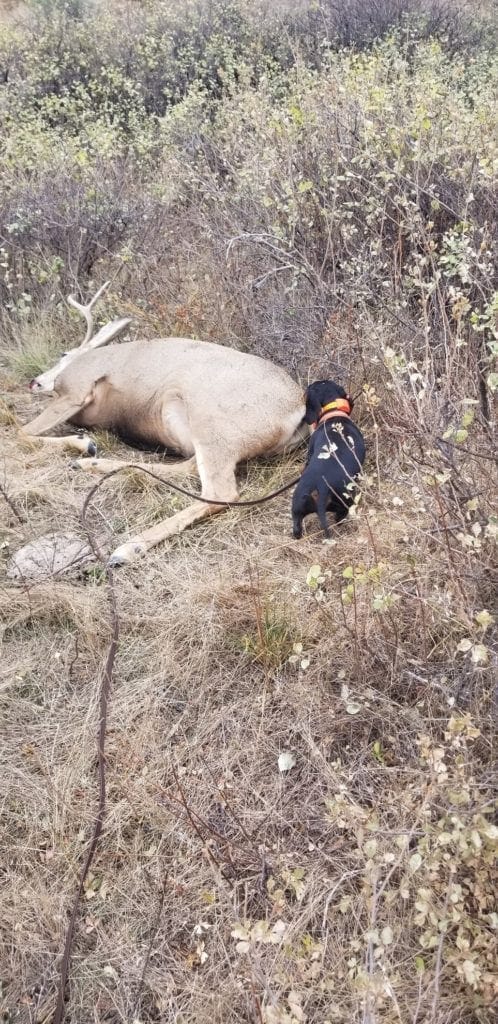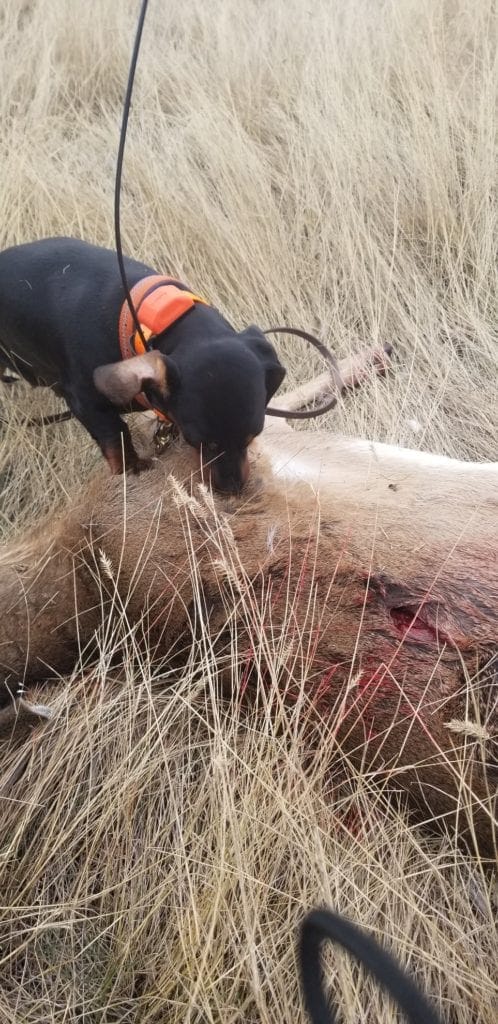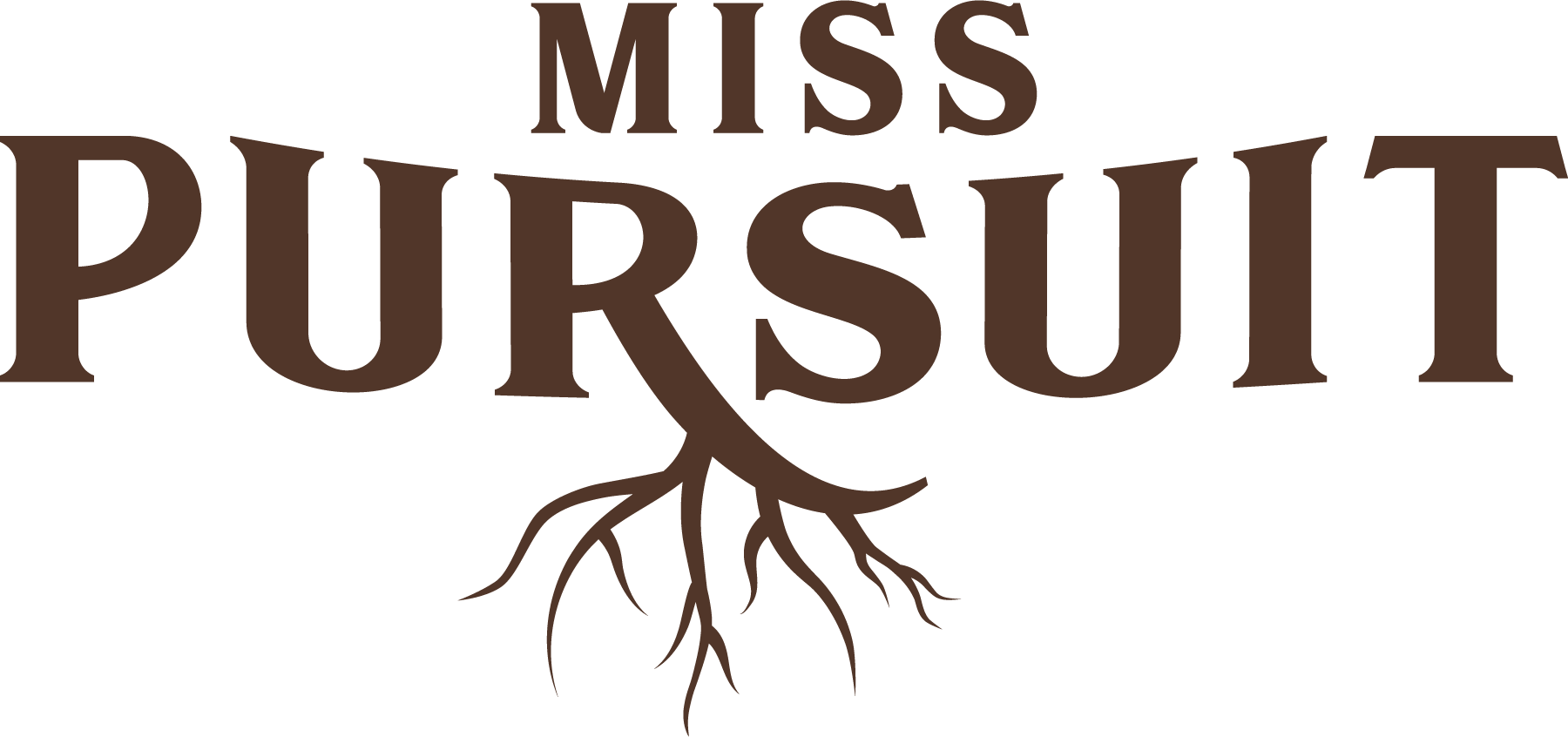There is no worse feeling than shooting an animal and then not finding it. Even the best shot placement can leave you with little or no blood, or rain can wash your trail away. Most hunters know that most times your big game prey do not just fall over within sight. Tracking with dogs takes skill and experience and even the best human trackers lose animals.
There is an increasing trend of utilizing tracking dogs after the shot.
Using tracking dogs to locate animals is legal in all but 9 states. A study done in Oklahoma estimated that about 50% of archery deer that were wounded were recovered. The data is summarized along with other great facts here. While tracking should be part of every hunter's repertoire, after having gone with a dog, I think that calling a dog to a hidden track is always a good idea.

If you shoot an animal and wait the appropriate amount of time based on where you think you shot it, unless you see it dead on the ground, you're likely to spend some time searching for it. Realtree Hunting has a really cool interactive model of wait times and what your arrow should look like. I always wait at least an hour unless I see it lying there. With an archery shot, you should know or have a good idea of where you hit the animal. Or, with a double lung or heart shot the kill should happen quickly, waiting that hour should be sufficient for the animal to expire. With a liver shot, you should wait 5-6 hours before going out to look for the animal. For a gut shot, you should wait for at least 10 hours.
When you track with a tracking dog:
Registered or trained dogs are way more prepared to find that animal as there is nothing that works as hard as a dog with a job. Dogs have 400 times more olfactory receptors and better eyes than humans. I have a group of friends who track with their animals, and like most hunters who have dog-hunting companions, they train all year long.
{Get started training your dog to hunt}
When you track on your own:
When you call a reputable tracker they will ask you about your shot, how long you waited, and how much tracking you did. Romping around the woods and doing grid searches can damage the blood and scent trail that you may not even be able to see. It is always best to pull back and call the trackers. Trackers will often turn you down if you went out too early and bumped the animal or if you started grid searching on your own. I know it is hard, but watching a dog do his job to quickly find an animal is one of the best experiences I have been part of.

The benefit of using a tracker is that they typically find about 40% of animals that they go out on tracks for. This number can be as low as 25% and as high as 75% depending on their selectivity in choosing tracks to go out on.
Types of Hunting Dogs Used for Tracking
Dogs come in all shapes and sizes, each breed uniquely suited to specific tasks. Similarly, in the realm of tracking, different types of hunting dogs excel in various terrains and scenarios. Let's explore some of the most commonly employed breeds:
Bloodhounds
Renowned for their exceptional olfactory prowess, Bloodhounds are true scent-tracking experts. With an estimated 300 million scent receptors, their noses are finely tuned instruments capable of discerning even the faintest traces of a wounded animal. Their droopy ears and wrinkled skin only add to their charm, making them a favorite choice among professional trackers.
German Shorthaired Pointers
A versatile and energetic breed, German Shorthaired Pointers possess an innate hunting instinct and a remarkable ability to follow scent trails. Their athleticism and endurance make them ideal companions for tracking in rugged terrains, from dense forests to expansive plains. These loyal dogs combine grace with utility, making them highly sought after by hunters worldwide.
Plott Hounds
Originating from the United States, Plott Hounds are renowned for their tenacity and unwavering determination. Bred specifically for tracking large game, they possess an exceptional sense of smell and an unyielding spirit. Plott Hounds are often favored for their ability to track wounded animals over long distances, making them invaluable assets in challenging hunting expeditions.
Training Methods for Tracking Dogs
Successful tracking with dogs relies heavily on proper training techniques. It is not enough for a dog to have an instinct for tracking; they must undergo rigorous training to refine their skills and become reliable companions. Here are some effective methods employed in training tracking dogs:
Scent Introduction
During the early stages of training, puppies are gradually introduced to different scents associated with wounded animals. By familiarizing them with these scents, trainers lay the foundation for their future tracking abilities. This process involves exposing the puppies to scent trails, blood samples, and other olfactory stimuli, gradually building their recognition and response.
Tracking Exercises
As the dogs grow older, more structured tracking exercises are introduced. Trainers simulate realistic tracking scenarios using scent trails or mock wounded animals. Dogs learn to follow these trails while staying focused and determined, honing their tracking abilities with each practice session. Positive reinforcement, such as treats and praise, is often used to encourage and reward the dogs for their progress.
Field Training
Field training is a crucial phase where dogs transition from controlled environments to real hunting grounds. They learn to track amidst distractions, varying terrains, and changing weather conditions. Field training allows dogs to adapt their tracking skills to real-world situations, preparing them for the challenges they will face during actual hunting expeditions.
Analyzing Factors Affecting the Success Rate of Tracking Dogs
When it comes to tracking with dogs, understanding the factors that can influence the success rate is crucial. These variables play a significant role in determining the effectiveness of the tracking endeavor. In this section, we will delve into the key factors that impact the performance of tracking dogs, shedding light on the intricacies of this remarkable partnership between humans and canines.
Environmental Conditions: Nature's Challenges
The environment in which tracking takes place can pose numerous challenges for both dogs and handlers. Factors such as weather conditions, terrain, and vegetation density can affect the success rate of tracking dogs. Adverse weather, including heavy rain or snowfall, can wash away scent trails, making it more difficult for dogs to follow the trail accurately. Similarly, extreme heat or cold can impact a dog's endurance and focus during the tracking process.
Furthermore, dense vegetation, such as thick forests or tall grass, can obscure scent trails, making it harder for dogs to pick up the desired scent. In such situations, dogs rely on their training and the guidance of their handlers to navigate through these obstacles and stay on track.
Training and Experience: The Key to Success
The training and experience of both the handler and the tracking dog play vital roles in the overall success rate of tracking endeavors. Well-trained dogs that have undergone rigorous tracking training programs are more likely to exhibit higher success rates. These programs focus on developing the dog's olfactory capabilities, honing their tracking skills, and improving their overall obedience and discipline.
Moreover, experienced handlers who understand canine behavior and possess in-depth knowledge of tracking techniques can greatly enhance the effectiveness of the tracking process. They know how to read the subtle cues exhibited by their canine companions and can make informed decisions based on their observations.
Proper Shot Placement: A Critical Factor
The success of tracking with dogs begins long before the tracking itself. It starts with the hunter's shot placement during the initial hunting phase. Proper shot placement is crucial for a clean and ethical kill. It directly impacts the ease of tracking and recovery.
A well-placed shot in vital organs, such as the heart or lungs, leads to a quicker and more humane kill. The animal is more likely to expire swiftly, minimizing the distance it travels after being wounded. This not only reduces the complexity of the tracking process but also increases the chances of successful recovery.
On the other hand, poor shot placement, such as hitting non-vital organs or making a gut shot, can significantly complicate the tracking process. Animals that have been poorly wounded may travel farther distances, leaving fainter scent trails and making it more challenging for tracking dogs to locate them. It is essential for hunters to continually improve their marksmanship skills to ensure ethical kills and facilitate successful tracking.
Common Mistakes During Tracking and Recovery
While tracking with dogs can be a powerful tool, there are common mistakes that hunters can make, inadvertently impeding the tracking process. It is crucial to be aware of these pitfalls to maximize the chances of a successful recovery.
One common mistake is premature interference with the wounded animal's trail. Hunters may prematurely start tracking without giving the animal enough time to expire. Interfering with the scent trail can contaminate the area, making it more difficult for dogs to pick up the scent and follow the trail accurately.
Another mistake is failing to preserve and properly follow the blood trail. Blood trails are vital indicators that can guide both the handler and the tracking dog. Careless handling of the trail, stepping on it, or failing to mark it properly can lead to confusion and misdirection.
Commonly asked questions regarding tracking with dogs:
How do I start tracking my dog?
To start tracking your dog, it's essential to begin with basic obedience training. Teach your dog to follow commands such as “stay” and “come.” Introduce scent games by hiding treats and encouraging your dog to find them. Gradually progress to using scent trails and rewarding your dog for successfully tracking scents. Patience and consistency are key during the training process.
What dog is best for tracking?
Different breeds excel at tracking. However, the best dogs for tracking are typically those with a strong sense of smell and a natural instinct for tracking scents. Breeds like Bloodhounds, German Shepherds, and Labrador Retrievers are often favored for their olfactory abilities and tracking aptitude. Also, individual temperament and training play a significant role, so it's important to consider each dog's unique characteristics and suitability for tracking.
What is tracking with your dog?
Tracking with your dog involves utilizing their exceptional sense of smell and tracking instincts to locate and follow scents left by a particular target, such as a missing person or an animal. The dog uses its nose to detect and discriminate scents, following the scent trail to locate the desired target. This activity can be both a practical skill for search and rescue operations and a recreational activity for dog owners.
Are tracking dogs effective?
Yes, tracking dogs are highly effective when properly trained and utilized in suitable environments. Dogs possess an exceptional sense of smell, which allows them to detect and distinguish scents that are undetectable to humans. Their ability to track scents over varied terrains and conditions makes them invaluable in search and rescue operations, as well as in tracking wounded animals during hunting. However, effectiveness can vary depending on factors such as training, experience, and the specific task at hand.
